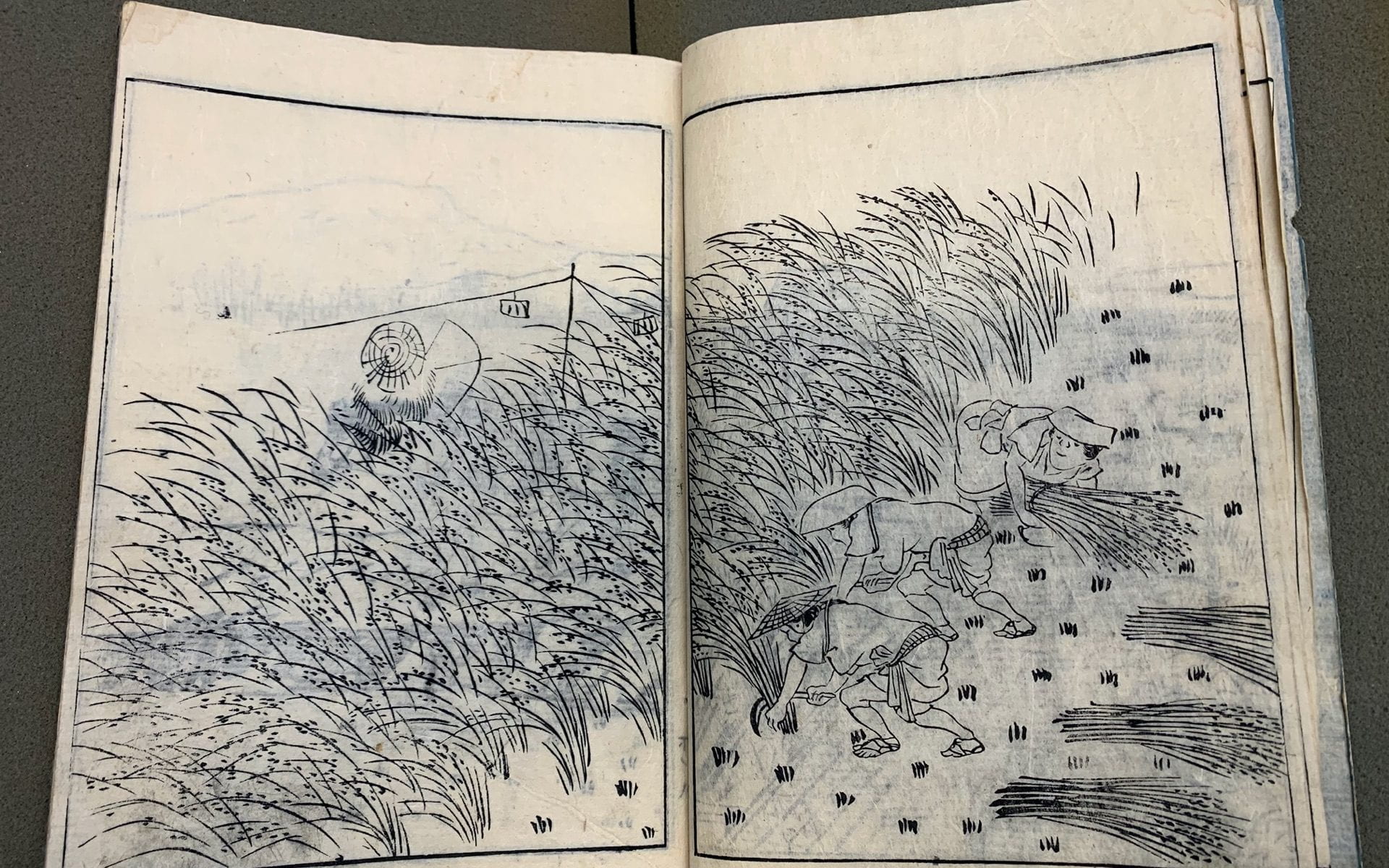
Title: En’o gafu 圓翁画譜
Artist: Yamaguchi Soken
Medium: Woodblock printed; ink and color on paper.
Tress Collection, Box 28, Item 17
Maruyama Ōkyo (1733-1795) was highly celebrated for his naturalistic renderings of flowers, birds, and animals. Widely admired for his skill as an artist, Ōkyo was also known in his lifetime as an influential mentor to later Japanese-style artists. One of the most well known was Matsumura Goshun 松村 呉春 (1752-1811). Initially, Goshun requested Ōkyo as a mentor; instead, the master welcomed Goshun as an equal and fellow artist. The Murayama-Shijo style has come to refer to the approaches developed by Okyo and Goshun in painting.
Ōkyo’s student, Yamaguchi Soken designed the illustrations in the En’o gafu book as an homage to Ōkyo’s skill and influence. Soken’s illustrations in the book are rendered after Ōkyo’s paintings and show how highly regarded Ōkyo was by later generations.
Soken selected many of Ōkyo’s paintings to be included here, making sketches after Ōkyo’s paintings; these were transferred to woodblocks to be printed on paper. Soken also included a number that show the social contrasts between the commoners and the rich during the period. This book was published in 1837, over 40 years after Ōkyo’s death, during the Great Tenpō Famine.
Similar to Ōkyo and the French realist painter Gustave Courbet, Soken makes the wide range of people illustrated more inclusive and we may wonder whether his selection of individuals deliberately put in contrast the old and feeble, the fishermen with the merchants, and the upper class who were afforded leisure and gluttony during a time of great famine.
Other Copies
Yale University
National Library of Israel
Pulverer collection, Freer Gallery of Art
Selected Readings
Chibbett, David G. The History of Japanese Printing and Book Illustration. Kodansha International; New York: distributed by Harper & Row, 1977.
Foxwell, Chelsea. Making Modern Japanese-style Painting: Kano Hogai and the Search for Images. University of Chicago Press, 2015.
Hall, John Whitney. The Cambridge History of Japan: Early Modern Japan. Cambridge University Press, 1991.
Hillier. J. The Art of the Japanese Book. London: Published for Sotheby’s Publications by Philip Wilson Publishers; New York, 1987.
Mason, Penelope. History of Japanese Art. Pearson Prentice Hall, 2005.
Paine, Robert Treat, and Alexander Coburn Soper. The Art and Architecture of Japan. Yale University Press, 1981.
Sullivan, Michael. The Meeting of Eastern and Western Art (Revised and expanded ed.). 1989.
Post by Kemuel Benyehudah






